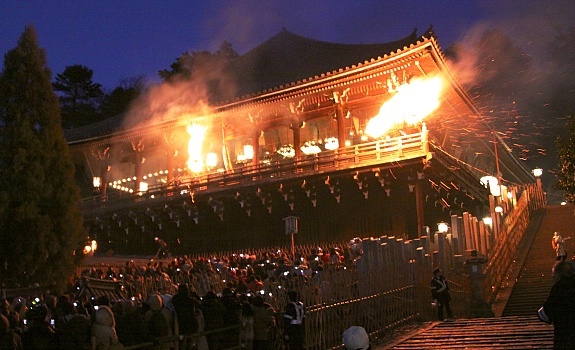
Omizutori is the commonly used name for Shunie, a series of events held annually from March 1 to 14 at Todaiji Temple. This collection of Buddhist repentance rituals has been held every year for over 1250 years, making it the one of the oldest reoccurring Buddhist events in Japan.
Omizutori is performed at Nigatsudo Hall, a sub complex of Todaiji, which stands not far from the temple's main hall on the slope of a hill. Nigatsudo literally means "second month hall", referring to the second month of the lunar calendar, when Omizutori has traditionally been held. The second month of the lunar calendar roughly corresponds to March of the solar calendar.
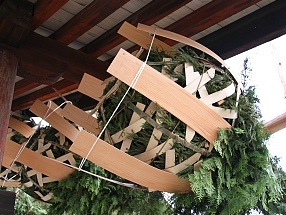 | 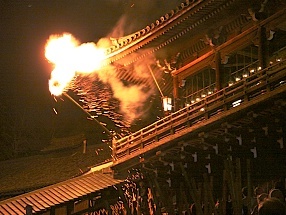 |
Otaimatsu:
Among the many different events held during Omizutori, Otaimatsu is the most famous and spectacular. Just after sunset on every night from March 1 through 14, giant torches, ranging in length from six to eight meters, are carried up to Nigatsudo's balcony and held over the crowd. The burning embers, that shower down from the balcony, are thought to bestow the onlookers with a safe year.
The size of the torches and the duration of Otaimatsu vary from day to day. On most days, ten medium sized torches are brought up to and carried across the balcony one after the other, and the entire event lasts about twenty minutes, while the audience stands in the courtyard below the wooden temple hall.
| | ||||
On the 12th and 14th, however, the procedure is slightly different, as shown in the table above. On the 14th, the last day of Omizutori, the event lasts only about five minutes, but all ten torches are brought up to the balcony at the same time, making for a particularly spectacular sight.
On the 12th, the torches are larger and more numerous, and the ceremony lasts longer. It is also the most crowded day, so that most spectators cannot settle down in front of the Nigatsudo, but are kept continuously moving past the hall in a queue, limiting actual viewing time to around five to ten minutes.
On all days of the event the courtyard below Nigatsudo becomes crowded before sunset, and it is advised to arrive early in order to get good views of the balcony. Crowd size varies from day to day, with heavier crowds expected on weekends and lighter crowds when the weather is poor. On the 12th it becomes most crowded, but it may not be necessary to arrive early, as the spectators are rotated through the courtyard, offering everyone a brief view of the action.
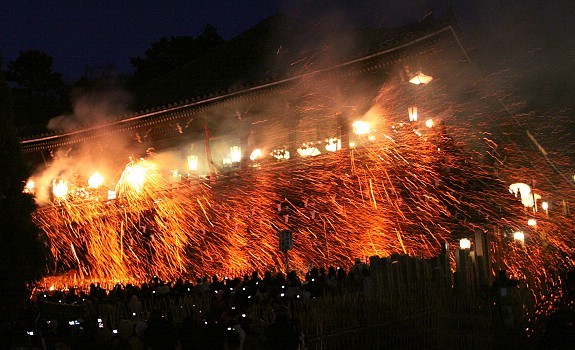
Other Events:
In the night from March 12 to March 13 between around 1:30am and 2:30am, priests descend repeatedly from the Nigatsudo by torchlight to draw water from a well at the base of the temple hall. The well's water is said to flow only once a year, and to have restorative powers. It is this event that is actually named Omizutori ("water drawing"). Yet the entire two-week event has become popularly known under its name.
Following the water drawing event, the mysterious Dattan ceremony is performed inside the Nigatsudo hall. During the ceremony, horns are blown, bells are rung and priests swing around burning torches inside the wooden building. The event comes to an end around 3:30am.
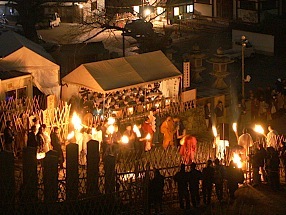 | 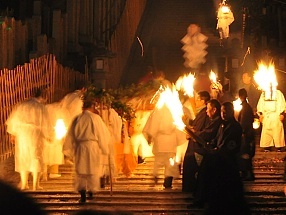 |




No comments:
Post a Comment